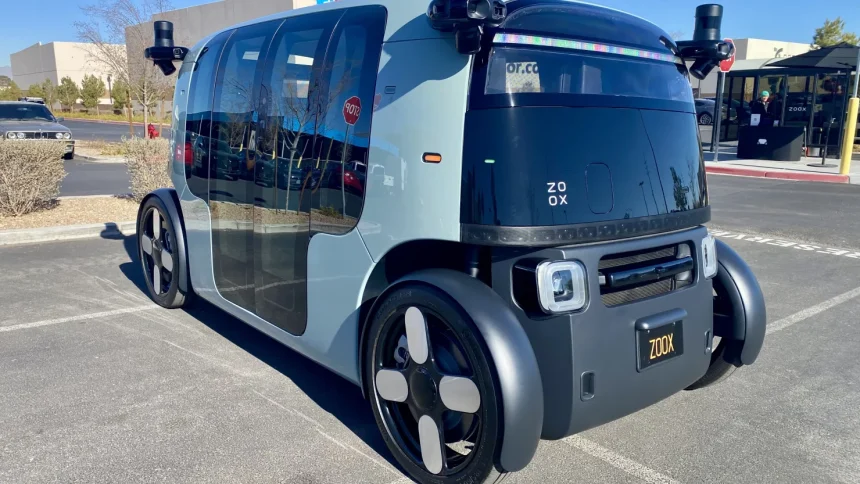Amazon’s autonomous vehicle unit, Zoox, is poised for significant growth in 2025 as it aims to expand its operations and introduce its robotaxi service to the public. The year marks a pivotal moment for the company, which seeks to solidify its place in the competitive robotaxi industry while navigating technical, regulatory, and market challenges.
Scaling Operations and Public Launches
Zoox plans to launch its Early Rider Program in Las Vegas, its anticipated first commercial market, in the coming months. This program will precede a broader rollout later in the year, with San Francisco next on the list. Zoox is also exploring potential expansions to cities like Miami and Austin, though no timeline has been announced.
Co-founder and CTO Jesse Levinson expressed optimism about the company’s trajectory: “We’re pretty happy with the progress we’ve made,” he said during a test ride in Las Vegas. Levinson added that Zoox aims to grow its self-driving vehicle fleet significantly from the few dozen currently in operation.
Innovative Design and Performance
Unlike competitors such as Waymo, Zoox’s robotaxis were purpose-built without manual controls like steering wheels or pedals. The design features middle-opening doors and seats that face each other, creating a unique passenger experience. This design sets it apart from retrofitted traditional vehicles commonly used by other companies.
Autonomous driving expert Sam Abuelsamid described the vehicle as having “the right size of vehicle, the right kind of form factor,” highlighting its practicality for urban mobility.
During a test drive around Las Vegas, Zoox’s robotaxi demonstrated smooth and assertive driving, though minor inefficiencies, such as staying in traffic rather than navigating around obstacles, were noted. Levinson emphasized the importance of balanced driving, explaining that the vehicle must avoid being overly cautious or aggressive to ensure safety and compatibility with human drivers.
Navigating Industry Challenges
The robotaxi market has proven to be far more challenging than anticipated, with high development costs, lengthy payback periods, and regulatory uncertainties. Legacy automakers like GM and Ford have disbanded their self-driving units in recent years, while others, like Tesla, have yet to deliver on their robotaxi promises.
Despite these hurdles, Zoox remains committed to a steady and safety-focused rollout. Levinson acknowledged the challenges but emphasized that customers would soon derive real value from the service. “We’ve taken a pretty conservative and steady approach to scaling and rolling out, just because of the safety-critical nature,” he said.
Competition and Future Outlook
Waymo, backed by Alphabet, remains the industry leader, with a significant head start in deploying robotaxi services across multiple U.S. cities. Waymo’s operations now include over 150,000 paid rides weekly, highlighting the scale that competitors like Zoox aspire to achieve.
Abuelsamid praised Zoox’s technological progress but questioned its long-term business model. “The technology is maturing. It’s still not perfect, but it’s getting better,” he said. However, he noted the challenge of creating a sustainable operating model to cover costs and achieve profitability.
The Road Ahead for Zoox
As Zoox continues its journey in 2025, the stakes are high. With plans to expand its fleet, enter new markets, and begin public operations, the company is charting a bold path in a challenging industry. Levinson’s vision reflects Zoox’s ambition to become a major player in urban mobility: “Hopefully by the end of this decade, if you’re in most of the major cities in the U.S., this will be your favorite way to get around.”
Zoox’s innovative approach and Amazon’s backing position it as a key contender in the robotaxi market. However, the company must navigate fierce competition, significant costs, and evolving regulations to realize its vision. If 2025 unfolds as planned, Zoox could solidify its role in shaping the future of autonomous transportation.





